|
 |
■ Bioresources information is available at the following URLs
|
 |
|
Introduction to Resource Center 〈No.35〉 Activities for Data Infrastructure
Construction of
Microbial Resources in Chinese Academy of Sciences
Wu Linhuan(Assistant Professor, Information Center, Institute of Microbiology, Chinese Academy of Sciences)
|
According to the investigation of Microbiology resource in China conducted in 2004, there are 49 Institutes and Colleges collecting 290,899 cultures in total. The Committee on Type Culture Collection of Chinese Academy of Sciences was organized by Chinese Academy of Sciences in April. 1996. The Committee includes 9 members of Culture Collections. These are:
・China General Microbiological Culture Collection Center(CGMCC)
・China Center for General Viruses Culture Collection(CCGVCC)
・Cell Bank
・Kunming Cell Bank
・Gene Bank
・In vitro Plant Germplasm Collection(IVPGC)
・Rare, Endangered and Endemic Plant Germplasm Collection(REEP)
・Marine Biological Germplasm Collection
・Freshwater Algae Culture Collection(FACHB)
Chinese government and academic organization have launched a series of projects to better understand and preserve biological resources: the National Framework for Sharing of Natural Resources supported by MOST, the Biological species investigation conducted by SEPA and the Conservation and Sustainable use of Bio-resources initiated by Chinese Academy of Science.
|

Photo: Pekin(Beijin)
Olympic center |
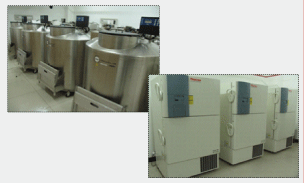
Photo: Preservation of Microorganism in CGMCC |
China General Microbiological Culture Collection Center (CGMCC) belonging to Chinese Academy of Sciences (CAS) was founded in 1979 as a non-profit organization to preserve and distribute microbial strains and provide public service in microbe related techniques. CGMCC was entrusted by State Intellectual Property Office of China to preserve microbial strains for the purpose of patent procedure and ratified as an International Depositary Authority under Budapest Treaty in 1995.
Hitherto CGMCC has preserved more than 37,000 strains of more than 4,000 species of bacteria, actinomycetes, fungi, yeasts and 3,200 patent stains; in addition, 2 metagenomic libraries comprising of 76,000 clones with 418 Mbp DNA inserts in total are preserved, one for hot spring and one for yak rumen microbiota.
CGMCC has established contact with the culture collection centers worldwide in terms of strain exchange and collaborative study on microbial resources. It provides microbiological cultures, gene resources, bio-information and relevant technical services for various areas such as industrial and agricultural production, health, environmental protection, scientific investigation and education accord with the national and international laws of bio-safety and intellectual property. In 2010, the quality management system of CGMCC was audited and issued in compliance with ISO 9001:2008 requirements and OECD's standard for BRC.
Based on the microbial resources of China General Microbiological Culture Collection Center (CGMCC), Institute of Microbiology, Chinese Academy of Sciences (IMCAS) established the China Information Network of Biological Resource Center (BRC), aiming at integrating the numerous data and facilitating the effective utilization of the resources.
The data management work for CGGMCC and also other 7 culture collection centers in China are supported by information center of Institute of Microbiology, CAS. As part of the Information Center at Institute of Microbiology, is dedicated to developing the management platform of microbial resource database, the data standardization as well as microbial resource database and information sharing gateway. |
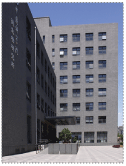
Photo:
Information Center
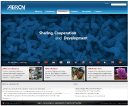
Figure: Home page of ABRCN |
The Information Center also serves as the information data center for CAS Type Culture Collection Committee, the Chinese node of Asian Consortium for Conservation and Sustainable Use of Microbial Resources, the Chinese node of Bio-Mirror, and the member of Global BRC Network. It has developed a series of databases as following: Microbial Culture Information Database, Strain Physiological Database, Nucleic Acid Sequence Database, Culture Marketing Database, Client Management Database, CAS Type Culture Collection Database, Asian Microbial Resources Catalog Database, as well as China’s largest information sharing network in microbiology. The accessible data amount is over 1TB. The Microbial Resources Management System has been adopted widely by the microbial culture collection centers in China, and served as the informational platform of Asian Microbial Resources Network.
In 2005, CGMCC of China, NBRC of Japan, KCTC of Korea and BIOTEC of Thailand completed Asian Biological Resource Center Network (ABRCN), and a data portal for public was set up. Now data of more than 30,000 strains has been integrated. More collections are invited to join this Asian BRCs network. |
|
In 2010, Chinese Academy of Sciences (CAS) launches the establishment of Research Network for Applied Microbiology (RNAM) to solve key scientific and technique issues in the field of microbiology. Research Network for Applied Microbiology (RNAM) is a research unit affiliated to Advanced Industrial Biotechnology Innovation Base, and it is in the charge of Bureau of Life Sciences and Biotechnology Chinese Academy of Sciences. RNAM aims to establish a network for microbiologists, build shared platforms of microbial resources and technology, exploit the power of microbes in bio-industry, and promote transition from fossil economy to bio-economy.
RNAM consists of Center of Research Network for Applied Microbiology,
・Center for Industrial Microbiology (South)
・Center for Industrial Microbiology (North)
・Center for Environmental Microbiology (South)
・Center for Environmental Microbiology (North)
・Center for Agricultural Microbiology
・Center for Marine Microbiology
All the members of RNAM communicate with each other through resource and technology standard, resource and information backup library, and technology service platform.
One of its tasks is setting up Information Center for RNAM. The Information Center will set down data specification of microbial resources, unify data standards, develop data warehouse for applied microbiological study, collect and utilize microbial resources data. It will develop virtual laboratory and network platform for joint research. It will also establish the project management platform of RNAM, transforming important immaterial assets such as scientific achievements, expertise, and management experience into information network resources, knowledge base and think-tank which can be managed, shared and used. Moreover, it will develop CAS Information Portal of RNAM, enhancing scientific exchanges and research achievements transformation, so as to promote applied microbiology research.
The information center will continue to support data management activities for microbial resource in CAS and also hope to expand international collaboration.
■
"Original article is written in English."
|
|
|
Bioinformatics with Excel

I will introduce a feature offered by Microsoft Research called Microsoft Research Biology Extension for Excel (hereafter referred to as Biology Extension). Biology Extension is an Excel 2007 and 2010 add-in with bioinformatics related features.
How to install Biology Extension
|

Click on the "Install the Microsoft Research Biology Extension for Excel" link in http://research.microsoft.com/en-us/projects/bio/mbt.aspx install Biology Extension. In addition to Excel 2007 or 2010, you also need to install the .NET Framework, VSTO Runtime and NodeXL. |
|
During the installation of Biology Extension, download buttons for the required software will be displayed. Click on them to install the software. You will be able to proceed with the installation of Biology Extension once the necessary software is installed.
After installation, a Bioinformatics tab will be added when you open Excel (Figure 1).
Let's try using BLAST. Input a query sequence in cell A1 and select from the BLAST menu (Figure 2). Do not include space or line feed in the query sequence. |
|

Figure 1

Figure 2 |

Check that the query sequence refers to cell A1 and click the OK button(Figure 3) |
|

Figure 3
|

Specify the BLAST parameter, uncheck "Use Browser Proxy" and click the Submit button (Figure 4). |
|
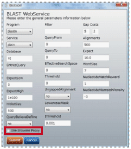
Figure 4 |
|
The results will be displayed in the BLAST_Result worksheet (Figure 5). It takes about 10 seconds for the results to be produced. |
|
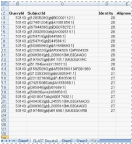
Figure 5 |

There are also features for Alignment and Assemble. This add-in might be a little difficult to install but those who would like to use Excel to easily perform bioinformatics related tasks should give a try.
(Shingo Sakaniwa)
|
|
|